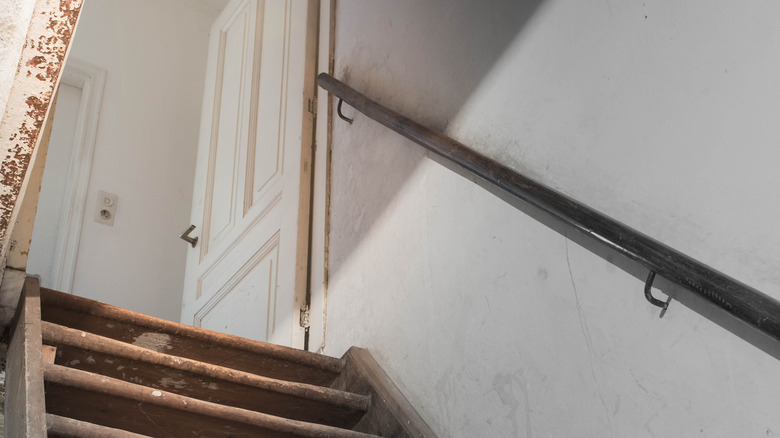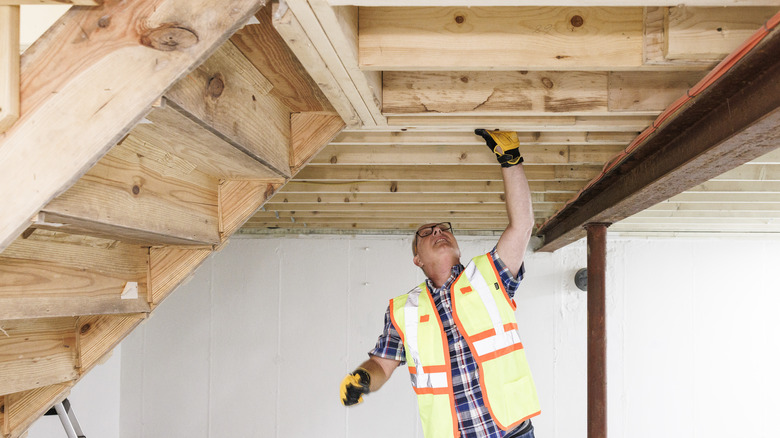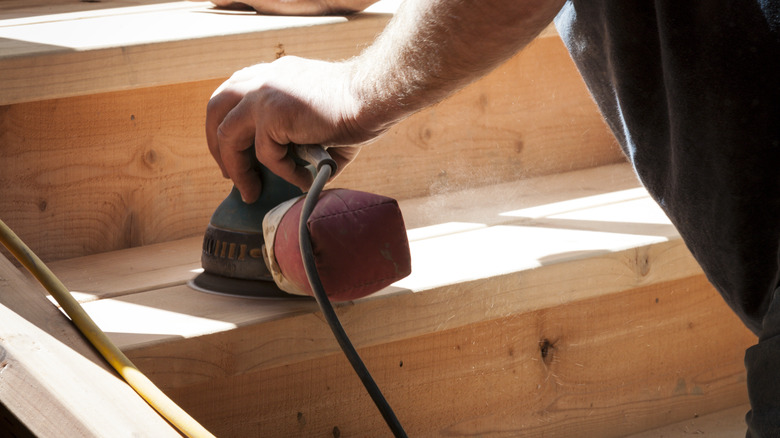HGTV's Hilary Farr Unveils A Space-Saving Solution For Bulky Basement Staircases
Stairwells can often take up a lot of room, whether they are connecting the main floor to the upstairs, or providing access to a basement, crawlspace, or other subterranean level. In a recent episode of "Tough Love" titled "Home at Last," HGTV's Hilary Farr created a rather ingenious solution for a pair of homeowners who longed to turn an unused space into a stylish sitting room.
In the episode, the owners were stuck with the problem of a basement stairwell — one they rarely used — that took up considerable real estate. To fix this, Farr replaced the stairwell with an easily accessible trapdoor that could be used if necessary, but could also be hidden beneath a sofa and disguised with vinyl flooring. While many homeowners may have solved their issue by simply relocating the interior stairwell to another area in the home, Farr decided not to, saying in the episode, "For the access to be useful, it has to be in a certain place, which is pretty much right where the stairs are now. And keeping them where they are would stop us from being able to enlarge this back room."
The choice to take the trapdoor approach was wholly welcomed by the homeowners, who had an additional (and more often used) access point to the basement from the outside of the home. The trapdoor still provides access from inside during colder weather, but removing the traditional stairwell's upper part made room for a cozy seating arrangement, wood-burning fireplace, and desk. While this solution worked well for their home, though, would it be just as applicable for others?
Using a trapdoor entrance for stairs
Hilary Farr's solution may be perfect if you are stuck with a cumbersome stairwell space that could be put to better use. A set of stairs underneath a trapdoor can be a great way to open up room where you need it, particularly since a trapdoor sits flush with the floor and allows you to hide the entrance artfully with furniture or rugs. There are some particular aspects to think through, though. For one, this approach works especially well if the interior stairs are a second entrance point, and you prefer to enter the basement through another outlet. It is also ideal if you have an unfinished basement used for nothing but occasional access to plumbing, heating, or electrical systems.
While Farr's solution places a trapdoor in the space the stairwell formerly occupied using the existing stairs, you could also use this approach in other areas, like pantries or bedroom closets, which make a perfect place to add additional access points when remodeling a basement. Additional trapdoor entrances can be outfitted with traditional stairs or a collapsable ladder. Not every home will benefit from this approach, however.
Is a trapdoor right for your home?
While excellent for saving space on the main floor, a trapdoor may not be the best idea for homes with small children or pets. The large opening in the floor can result in falls and is harder to navigate without a railing extending all the way to the top, particularly if you are carrying something up or down. Since accessing the trapdoor may involve shifting things in the room or lifting a heavy door, it may also be a poor fit for those with disabilities or less physical strength. When considering the solution in "Tough Love," Hillary Farr tells the homeowners that, in her words, "You can do that as long as you're okay with the concept of having to move furniture away from the trapdoor when you need it."
The trapdoor solution will likely not work if you need more regular access to the underground space, like a basement laundry room or additional pantry storage. It may also impede moving larger appliances or furniture items in and out with its far smaller opening. Finally, if you are considering this solution in lieu of a traditional stairwell, you may want to check with a contractor or local building codes since regulations vary on the number and placement of basement entrances and egresses.


